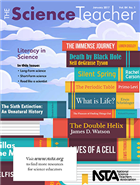Health Wise: Why Teens Need the HPV Vaccine
By sstuckey
Posted on 2017-01-12
About 79 million Americans have human papillomavirus (HPV), the nation’s top sexually transmitted disease. “Nearly all sexually active men and women get it at some point in their lives,” according to the U.S. Centers for Disease Control and Prevention (CDC 2016a).
HPV usually goes away on its own. But sometimes, HPV can cause genital warts or cancer, even decades after an individual has sex with an infected person. HPV can cause cancer of the cervix, vulva, vagina, penis, or anus, as well as oral cancers.
High school students are especially at risk for contracting sexually transmitted diseases (STDs) (Bratsis 2014). Each year, about 14 million people, including teens, become infected with HPV, and more than 11,000 women get cervical cancer due to HPV, the CDC says (2016a).
The CDC and the American Academy of Pediatrics (AAP 2015) recommend that all boys and girls ages 11–12 get HPV vaccinations, which are given in a series of two or three shots. According to the CDC (2015), the vaccine targets the most common of the more than 150 types of HPV.
“Teen boys and girls who did not start or finish the HPV vaccine series when they were younger should get it now,” the CDC recommends (CDC 2016b). “Young women can get the HPV vaccine through age 26, and young men can get vaccinated through age 21. The vaccine is also recommended for any man who has sex with men through age 26.”
As of 2015, 49.8% of boys ages 13–17 had gotten at least one of the recommended three doses, up 7.9 percentage points from 2014. More than 60% of girls had gotten at least one dose of the vaccine, up 2.8 percentage points from 2014 (CDC 2016c).
Unfortunately, many parents may be wary of the HPV vaccine. Only 21% of parents said laws requiring the vaccine for students were a “good idea,” but that number rose to 57% if there were an “opt-out” provision, according to a national study (Calo et al. 2016). The lead researcher of the study, William Calo, told ABC news that an opt-out provision could weaken vaccination efforts (Chevisnky 2016).
In addition, “One of the most surprising findings of the study is that 60% of people don’t believe the vaccine is effective in preventing cervical cancer,” Calo said (Chavinsky 2016).
But studies do highlight the vaccine’s effectiveness. One study (Bernard et al. 2016) found that seven years after the HPV vaccine was introduced, the rate of moderate cervical precancerous lesions declined 54% among 15- to 19-year-old teens in New Mexico. The study also showed a 39% decline in moderate cervical precancers among 20- to 24-year-old women in New Mexico (Bernard et al. 2016).
Michael E. Bratsis is senior editor for Kids Health in the Classroom (kidshealth.org/classroom). Send comments, questions or suggestions to mbratsis@kidshealth.org.
On the web
HPV infographic: http://bit.ly/2eq8VuL
Article for students: www.teenshealth.org/en/teens/hpv-vaccine.html
References
American Academy of Pediatrics (AAP). 2015. AAP updates HPV vaccine recommendations after licensure of HPV9. www.aappublications.org/content/36/6/16
Bernard, B., P.E. Castle, S.A. Jenison, et al. 2016. Population-Based incidence rates of cervical intraepithelial neoplasia in the human papillomavirus vaccine era. Journal of the American Medical Association Oncology. http://bit.ly/2eq83X5
Bratsis, M.E. 2014. Health Wise: Teens and STDs. The Science Teacher 81 (3): 74–75. http://bit.ly/2g4e9ga
Calo, W.A., M.B. Gilkey, P.D. Shah, J.L. Moss, and N.T. Brewer. 2016. Parents’ support for school-entry requirements for human papillomavirus vaccination: A national study. Cancer Epidemiology, Biomarkers & Prevention. http://bit.ly/2fFz5He
Centers for Disease Control and Prevention (CDC). 2015. What is HPV? http://bit.ly/2bpgbpJ
Centers for Disease Control and Prevention (CDC). 2016a. Genital HPV infection—Fact sheet. http://bit.ly/1qN5PC6
Centers for Disease Control and Prevention (CDC). 2016b. HPV Vaccines: Vaccinating your preteen or teen. www.cdc.gov/hpv/parents/vaccine.html
Centers for Disease Control and Prevention (CDC). 2016c. National, regional, state, and selected local area vaccination coverage among adolescents aged 13–17 years–United States, 2015. http://bit.ly/2eq74WW
Chevinsky, J. ABC News. 2016. Parents Want ‘Opt-Out’ Option for HPV Vaccine, Study Finds. August 19. http://abcn.ws/2eXf4tM
Editor’s Note
This article was originally published in the January 2017 issue of The  Science Teacher journal from the National Science Teachers Association (NSTA).
Science Teacher journal from the National Science Teachers Association (NSTA).
Get Involved With NSTA!
Join NSTA today and receive The Science Teacher,
the peer-reviewed journal just for high school teachers; to write for the journal, see our Author Guidelines, Call for Papers, and annotated sample manuscript; connect on the high school level science teaching list (members can sign up on the list server); or consider joining your peers at future NSTA conferences.
Disclaimer: The views expressed in this blog post are those of the author(s) and do not necessarily reflect the official position of the National Science Teaching Association (NSTA).


